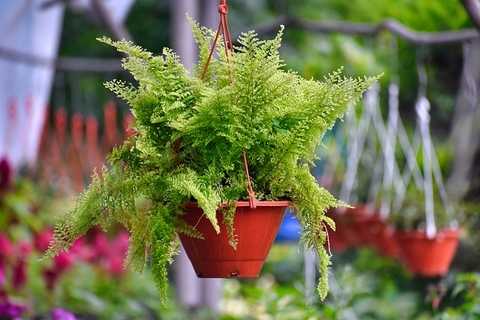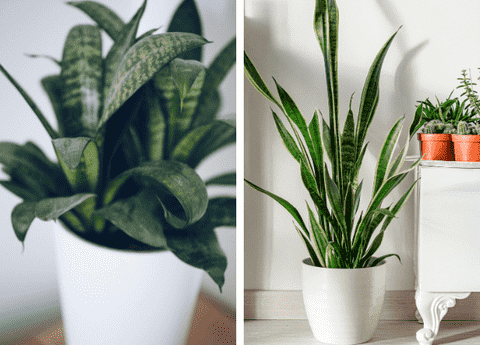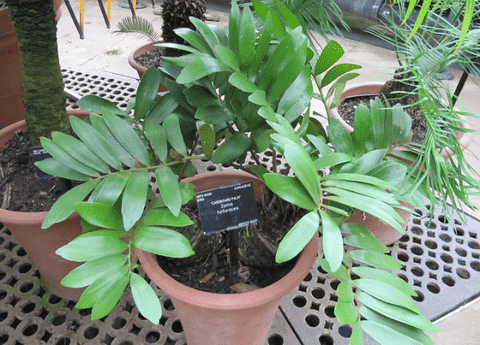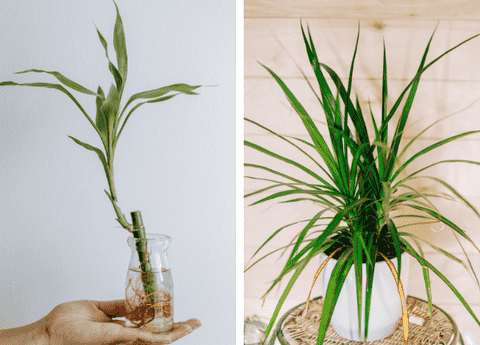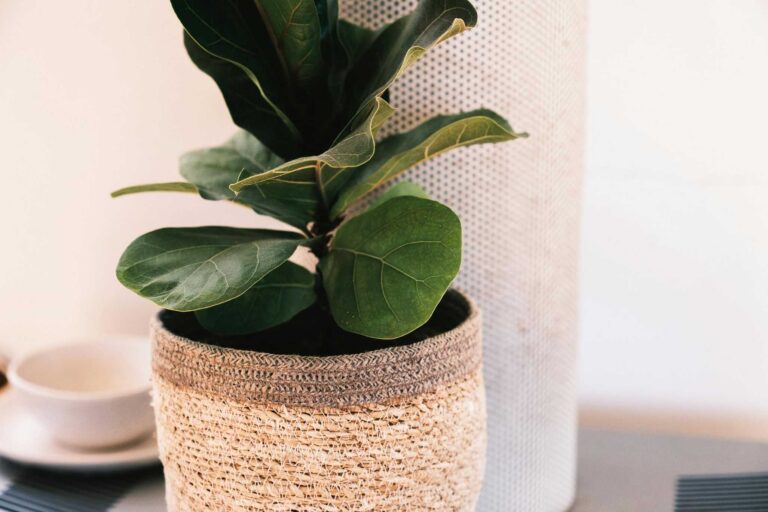Boston Fern (Nephrolepis exaltata): Guide for How to Growing and Care
The Boston Fern (Nephrolepis exaltata) is a timeless houseplant celebrated for its lush, arching fronds and air-purifying abilities. With its elegant, feathery foliage, it adds a touch of nature and tranquility to any indoor space. However, growing and caring for this beautiful fern requires specific attention to detail. In this guide, we will delve into essential steps for successfully cultivating and maintaining a healthy Boston Fern, covering everything from optimal lighting and watering practices to pest control and pruning. Transform your home into a verdant oasis with the classic beauty of the Boston Fern.
Introduction to Boston Ferns
Origins and History
The Boston Fern, scientifically known as Nephrolepis exaltata, traces its roots back to the tropical rainforests of South America, Africa, and the Caribbean. This fern gained widespread popularity in the late19th and early20th centuries, particularly in Victorian-era homes where lush, ornamental plants were highly fashionable. The name “Boston Fern” originated after a particular variety of the plant was discovered in a shipment of ferns sent to Boston from Philadelphia. Its graceful, arching fronds made it a favorite in parlors and conservatories, cementing its status as a classic houseplant. Over the years, the Boston Fern has maintained its charm and continues to be a beloved choice for indoor gardeners seeking to add a touch of verdant elegance to their living spaces.
Unique Characteristics
The Boston Fern is renowned for its distinctive, feathery fronds that can grow up to three feet long, creating a lush, cascading effect. These fronds are composed of numerous small leaflets that give the plant its elegant, airy appearance. One of the unique characteristics of the Boston Fern is its ability to thrive in indirect light, making it an ideal choice for indoor environments where direct sunlight is limited. Additionally, this fern is celebrated for its air-purifying qualities, effectively removing toxins such as formaldehyde, xylene, and toluene from the air. This not only boosts the aesthetic appeal of your home but also promotes a healthier indoor environment. Furthermore, the Boston Fern prefers high humidity, making it an excellent candidate for bathroom placement where moisture levels are typically higher.
Benefits of Growing
Growing a Boston Fern offers numerous benefits beyond its visual appeal. One of the primary advantages is its air-purifying ability. The fern efficiently filters out common indoor pollutants, contributing to improved air quality and a healthier living environment. This makes it an excellent addition to homes, offices, and any indoor space where clean air is a priority. Moreover, the presence of greenery like the Boston Fern has been shown to reduce stress and enhance overall well-being, promoting a sense of tranquility and relaxation. The fern’s preference for high humidity also helps maintain moisture levels in the air, which is particularly beneficial in dry climates or during winter months when indoor air tends to be drier. Furthermore, caring for a Boston Fern can be a rewarding hobby, offering a sense of accomplishment and a deeper connection to nature.
Growing Boston Ferns
Ideal Growing Conditions
To ensure your Boston Fern thrives, it is essential to provide the ideal growing conditions. These ferns prefer indirect, filtered light, making them perfect for spots like north-facing windows or areas with dappled sunlight. Direct sunlight can scorch the delicate fronds, so it’s crucial to avoid placing them in harsh, direct light. Temperature is another critical factor; Boston Ferns flourish in temperatures between60-75°F (16-24°C). They are sensitive to cold drafts and sudden temperature changes, so keep them away from vents or frequently opened doors. High humidity is also vital for their growth. Aim to maintain humidity levels around 50-80 %. Increase humidity by misting the fronds regularly, using a humidifier, or placing the pot on a tray filled with water and pebbles. Proper air circulation is important, but avoid overly windy spots that can dry out the foliage.
Planting and Potting Tips
When planting or repotting a Boston Fern, selecting the right pot and soil is crucial for its health. Choose a pot with good drainage to prevent water from stagnating at the bottom, which can lead to root rot. A clay or terracotta pot is ideal as it allows excess moisture to evaporate, maintaining the proper balance. Use a high-quality, well-draining potting mix specifically designed for ferns or houseplants. Adding peat moss or perlite can improve drainage and aeration within the soil. When potting, gently loosen the roots and remove any old soil to encourage new growth. Place the fern in the center of the pot and fill in around the roots with fresh soil, ensuring the crown of the plant is slightly above the soil line. After potting, give the plant a thorough watering and maintain consistently moist soil, ensuring it doesn’t become waterlogged.
Common Growing Mistakes
Growing Boston Ferns can be rewarding, but certain common mistakes can hinder their growth. One frequent issue is overwatering. While Boston Ferns like moist soil, too much water can lead to root rot. Make sure to verify that the top inch of soil has dried out before watering again. Conversely, underwatering can cause the fronds to turn brown and crispy. It’s important to maintain consistent moisture without allowing the soil to become soggy. Another common mistake is inadequate humidity. Boston Ferns thrive in high humidity, so placing them in dry environments, particularly near heating vents or air conditioners, can stress the plant. Poor lighting is another issue; too much direct sunlight can scorch the leaves, while too little light can stunt growth. Finally, using the wrong type of soil, such as heavy garden soil, can impede drainage and aeration, leading to poor root health.
Caring for Boston Ferns
Watering and Humidity Needs
Proper watering and humidity are crucial for maintaining a healthy Boston Fern. These plants thrive in consistently moist soil, but they don’t tolerate soggy conditions. Make sure to water the fern when the surface of the soil feels dry to the touch, about an inch deep. It’s best to use room-temperature water and ensure that the pot has adequate drainage to avoid water accumulation. Overwatering may result in root rot, whereas underwatering can cause the fronds to become brown and parched.
Humidity is another vital aspect of Boston Fern care. These ferns prefer high humidity levels, ideally between 50-80 %. If your home has dry air, especially during winter months, consider using a humidifier to maintain the right environment. Regular misting of the fronds can also help, as can placing the pot on a tray filled with water and pebbles. This creates a humid microclimate around the plant, aiding in its overall health and vigor.
Fertilization and Feeding
Fertilizing your Boston Fern is essential for promoting healthy growth and vibrant fronds. During the growing season, typically from spring to early fall, feed your fern with a balanced, water-soluble fertilizer every 4-6 weeks. A fertilizer with an equal ratio of nitrogen, phosphorus, and potassium (such as a 10-10-10 or 20-20-20 formulation) works well. Dilute the fertilizer to half the recommended strength to avoid overfeeding, which can burn the roots and foliage.
In the winter months, when the plant’s growth slows down, reduce the frequency of fertilization or stop altogether, as the fern needs fewer nutrients during this period. Ensure fertilizer is applied to damp soil to prevent root burn. Additionally, consider organic options such as fish emulsion or compost tea for gentle, slow-release nutrient sources. Regular feeding maintains the lush green appearance of your Boston Fern, enhancing its air-purifying benefits and overall aesthetic appeal.
Pest and Disease Management
Boston Ferns are generally resilient, but they can occasionally fall prey to pests and diseases. Typical garden pests comprise spider mites, mealybugs, and scale insects. Regularly inspecting your plant can help you spot an infestation early. If you notice pests, treat the fern with insecticidal soap or neem oil, ensuring thorough coverage of the fronds and undersides of leaves. For severe infestations, you might need to isolate the affected plant to prevent the pests from spreading.
Diseases such as root rot and fungal infections can also affect Boston Ferns, typically due to overwatering or poor air circulation. To prevent these issues, ensure the pot has proper drainage and avoid letting the fern sit in waterlogged soil. Maintaining good air circulation by not overcrowding plants and occasionally pruning dense growth can also help. If you detect signs of disease, such as yellowing leaves or moldy soil, remove the affected parts and adjust your care routine to mitigate the problem.

